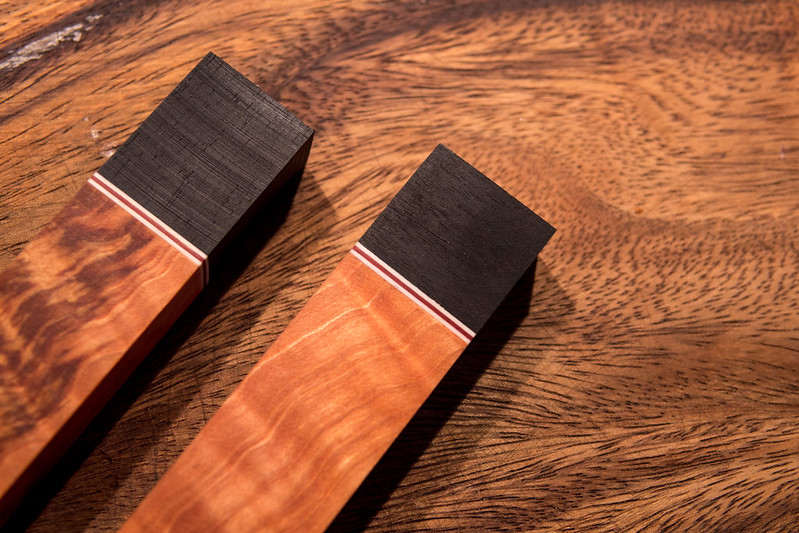icanhaschzbrgr
ill-Known Member
While many of you were enjoying Christmas, I was busy messing with handles. After glueing two blocks and raw sanding them I discovered that ferrule wood grain is messed on one of them. On left blank ferrule grain is vertical and on the right horizontal.

Do you think it's ok to keep horizontal oriented grain ferrule? It's ebony and grain direction isn't very pronounced, so I think I can safely get away with this one. Or it would look weird after finishing? :scratchhead:
From your woodworking experience are there any types of wood that you can safely mix in terms of wood grain direction? Or it's always necessary to match wood grain for all different wooden parts?

Do you think it's ok to keep horizontal oriented grain ferrule? It's ebony and grain direction isn't very pronounced, so I think I can safely get away with this one. Or it would look weird after finishing? :scratchhead:
From your woodworking experience are there any types of wood that you can safely mix in terms of wood grain direction? Or it's always necessary to match wood grain for all different wooden parts?




